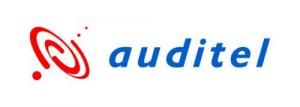
To understand what CBAM is and why it has been introduced, you first need to understand that with many markets (EU, UK, USA etc) the concept of Emission Trading Schemes (ETS) were set up a number of years ago to basically “tax” high intensity energy consuming industries within those markets. This was done to encourage a lowering of carbon emissions and industries such as cement, power generation, and iron & steel fell within the scope of the ETS.
EU based producers who were subject to the ETS then faced higher costs in production than producers in other markets who did not have an equivalent ETS or whose ETS had a lower carbon price. This basically means overseas (out of market) producers might have a competitive advantage over in-marketproducers. The European Union’s response to that was to introduce the Carbon Border Adjustment Mechanism (CBAM). It represents a significant shift in the European Union’s approach to combating climate change and promoting sustainable industrial practices. Implemented by the European Commission, CBAM aims to level the playing field for EU producers by applying a carbon price to imports of certain goods from outside the EU. This mechanism not onlyseeks to prevent ‘carbon leakage’ where companies might relocate production to countries with less stringent emissions regulations but also encourages global manufacturers to adopt greener practices.
The Challenges Posed by CBAM
CBAM introduces a complex system of carbon tariffs on imports into the EU, covering sectors such as steel, aluminium and fertilisers — industries known fortheir high carbon intensity. From October 2023 any companies inside the EU who import goods from outside the EU and that fall within a defined list of import codes, must provide a quarterly CBAM report on the imported goods to declare specific greenhouse gas emissions embedded in these goods. After a two-year transitional period, as of 01 January 2026, the importer will be required to purchase corresponding CBAM certificates, reflecting the cost of carbon emissions priced within the EU Emissions Trading Scheme (ETS). Therefore, potentially making the imported goods more expensive than they are today. While the legal burden of CBAM applies to the importer, they will immediately push the reporting and cost implications to their suppliers. It is worth noting that whilst default factors were allowed early on to ease the reporting process, CBAM reports due after by 31 July 2024 will be restricted in their use of default values and will require actual embedded emissions to be reported. If you are in the UK and export to customers in the EU, or have UK based customers who export your goods to the EU, these challenges are coming your way.
Strategic Implications for Global Trade
The mechanism is set against a backdrop of increasing trade tensions and represents a strategic response by Europe to address potential trade barriers while pushing for a greener economy globally. This move, however, brings numerous challenges for businesses importing into the EU, including the need for detailed emissions reporting, compliance with new regulatory requirements and potential financial impacts due to the cost of CBAM certificates.
The introduction of the EU’s CBAM has also spurred the UK (who operates its own ETS), to commit to introducing a similar “UK CBAM” by 2027, meaning UK businesses who use imported metals or other materials on the CBAM list, will themselves need to report on specific embedded emissions and pay a “carbon tax” on these imports, subject to where they were originally produced.
Operational and Compliance Challenges
For importers, the primary challenge lies in accurately calculating the specific embedded emissions of their products, adhering to stringent reporting requirements and ensuring compliance with the CBAM regulations. This mechanism mandates comprehensive documentation and verification processes that require robust systems and processes.
Turning CBAM into a competitive advantage
Forward thinking businesses are already looking at how they can turn CBAM into a competitive advantage by lowering the cost impact of CBAM on their customers.
They achieve this in three ways:
1. Provide customers with all the data needed to make reporting easy.
2. Measure the carbon embedded in products more accurately to avoid the EU’s default emission factors.
3. Work to reduce the emissions within their products
How Auditel Can Help
As specialists in carbon solutions and compliance, Auditel is uniquely positioned to assist businesses in navigating the complexities of CBAM. Our expertise spans understanding regulatory frameworks, emissions calculation, and strategic planning to mitigate the financial impact of compliance.
EXPERT GUIDANCE ON EMISSIONS REPORTING AND VERIFICATION
Auditel provides expert guidance on the entire lifecycle of emissions reporting—from initial assessment to detailed submissions required under CBAM. Our team helps ensure that your emissions data is accurately calculated, duly verified and compliant with EU standards.
STRATEGIC ADVISORY FOR CARBON MANAGEMENT
We offer strategic advisory services to help businesses adapt their operations in line with CBAM requirements. This includes optimising supply chains, selecting low-carbon materials and implementing more sustainable manufacturing processes to reduce the overall carbon footprint.
COMPLIANCE AND RISK MANAGEMENT
Auditel assists companies in understanding their compliance obligations under CBAM and helps develop risk management strategies to address potential financial impacts. We ensure that businesses not only meet the regulatory requirements but also capitalise on opportunities for innovation and sustainability in their operations.
PREPARING FOR THE TRANSITION
The transition period leading up to 01 January 2026 is crucial for businesses to adapt to the new regulations. Auditel supports companies through this phase by providing:
• CBAM Readiness Assessments: Comprehensive evaluations to determine your current state of preparedness and identify critical gaps.
• Customised Training and Workshops: Tailored training sessions for teams to understand CBAM requirements and learn how to manage and report emissions effectively.
• Technology Solutions: Implementing advanced IT tools to streamline the calculation, reporting, and documentation of carbon emissions as per CBAM guidelines.
For more information visit auditel.co.uk





